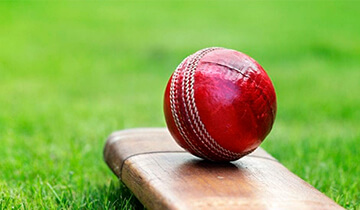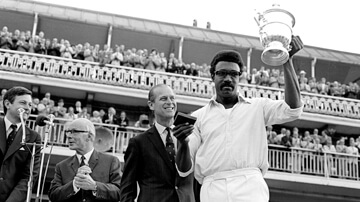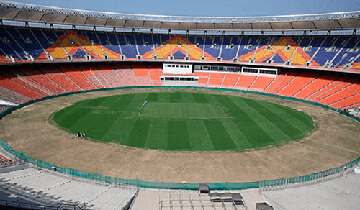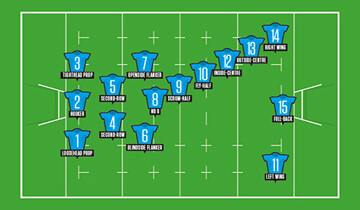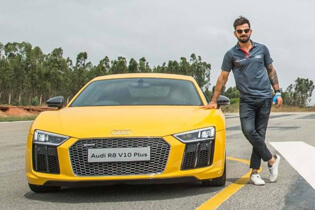The Evolution of Baseball Game Lengths
Baseball is known as America’s pastime and has a long, storied history as one of the most popular sports in the U.S. While baseball has no game clock, the length of games has been a frequent topic of discussion, especially in recent years as average game times have increased.
Factors Contributing to Longer MLB Games
Over the last several decades, multiple factors have contributed to Major League Baseball games getting longer. One major factor is increased scoring and home runs, leading to more time for batters to circle the bases after home runs and for pitchers to regroup after giving up runs. Additionally, the rise in relief pitching and increased pitching changes extends games. More commercial breaks and slower play between pitches have also added to game lengths.
Effects on Players and Fans
The increased average time of MLB games, now over 3 hours, has had effects on players and fans. For players, longer games mean more fatigue late in the season. For fans, slower games can mean less enjoyment and fewer nine inning games seen through to the end. Kids who become fans may also come to see baseball as slow.
Attempts to Shorten Games
In response to criticism over slow play, MLB has tried measures aimed at shortening games. Pitch clocks have been tested in the minor leagues to speed up at bats. Limiting mound visits by coaches and managers also addresses pace of play issues. More radical changes like starting extra innings with a runner on base have been proposed but not implemented.
Average MLB Game Length
Major League Baseball has long been criticized for its slowing pace of play, with average game times creeping higher and higher over the past decade. However, new rule changes implemented for the 2023 season seem to have successfully reversed that trend.
New Pitch Clock Leads to Much Quicker Games
In 2023, the average MLB game takes just 2 hours and 42 minutes. This is a significant drop from the 3 hours and 7 minute average in 2021.
The reduced time is primarily attributed to the introduction of a pitch clock, which MLB mandated across the league for the first time this season. The clock requires pitchers to begin their throwing motion within 15 seconds with no runners on base, and 20 seconds if there are runners. Violating the clock results in an automatic ball being called.
The pitch clock has succeeded in eliminating dead time and speeding up the time between pitches and at-bats. This in turn has trimmed nearly 30 minutes off the average game compared to two years ago.
Other New Rules Also Designed to Quicken Play
In addition to the pitch clock, MLB instituted other new rules in 2023 with the intent of shortening games.
The bases have been enlarged from 15-inch squares to 18-inch squares, making it easier for players to steal bases successfully. MLB hopes this will encourage more aggressive base running.
Teams are also now restricted in how they can position defenders, limiting the overuse of defensive shifts that some argue slow down the game.
Early Returns Suggest Progress in Pace of Play Issue
While the season is still young, the early results suggest MLB may have finally found solutions to counteract the league’s growing pace of play problem.
Fans who have complained about excessively long and dull games now have more action-packed contests that better hold their attention throughout.
If these trends continue, the game times from 2023 could represent a new normal for Major League Baseball in the years ahead. The league appears to have made meaningful strides in picking up the pace.
Longest Games in MLB History
Baseball games are renowned for their leisurely pace and lack of a game clock, which allows innings to continue on as long as needed. This has resulted in some extraordinarily long Major League Baseball games over the years when teams remained deadlocked. Let’s look at some of the longest MLB contests on record.
The Brooklyn Robins vs. Boston Braves 26-Inning Game in 1920
The longest MLB game by innings took place on May 1, 1920 between the Brooklyn Robins (later known as the Dodgers) and Boston Braves. The two teams battled for over 8 hours at Boston’s Braves Field, playing a whopping 26 innings before the game ended in a 1-1 tie called due to darkness. Pitching the entire 26 innings for Brooklyn was Leon Cadore, while Joe Oeschger went the distance for Boston. The game lasted a marathon-like 3 hours and 50 minutes.
Brewers vs. White Sox 25-Inning Game in 1984
While not the most innings, the longest game ever by time took place between the Milwaukee Brewers and Chicago White Sox on May 8, 1984. The two teams played 25 innings at Chicago’s Comiskey Park, with the game lasting an absurd 8 hours and 6 minutes before the White Sox finally prevailed 7-6. Tom Seaver earned the win in relief for Chicago, while Brewers’ starter Chuck Porter took the loss after pitching 7 innings at the start. This game helped spur MLB to institute new rules about suspended games if they go too long.
Other 20+ Inning Contests
There have been numerous other MLB games that went 20 or more innings without being resolved in the standard 9 innings. A few of the more notable ones include a 21-inning affair between the Giants and the Rockies in 2018, and two separate 20-inning games involving the Cardinals - against the Mets in 2010 and the Dodgers in 2004. However, new rules like placing runners automatically on 2nd base in extra innings have likely ended the possibility of 20+ inning games in today’s MLB. Still, the 1920 and 1984 games epitomize just how endless a baseball game can be.
Factors That Increase MLB Game Length
Baseball games seem to be getting longer in recent years. What factors contribute to increased game times in Major League Baseball? Here’s a look at some of the key reasons games are taking more time than ever.
High-Scoring Games Take Longer
Games where the score is lopsided tend to move faster. But when both teams are scoring frequently, games naturally extend. Lots of baserunners and extra at-bats mean more pitches thrown and more action on the field. Even the most exciting offensive shootouts will require over 3 hours to complete.
Pitching Changes Slow the Pace
When managers go to their bullpens frequently, it disrupts the flow of the game. Relievers take extra warm-up pitches, and there’s often a pitching change mid-inning after an at-bat or two. Mound visits by coaches also add delays, especially if a pitching change follows. Too many short outings from starters have increased this trend.
Replay Reviews and Arguments
Replays to review calls have added time to games. Even when the ruling stands, the challenge and review process adds minutes. The same goes for on-field arguments with umpires over balls and strikes. These confrontations have always existed, but seem more frequent now. All of this contributes to games dragging on.
Injuries, Weather and Extra Innings
Inevitable disruptions like player injuries, weather delays, and extra innings also lengthen games. Injuries force unplanned substitutions and pauses. Rain delays early on can push a game past midnight. And any game going into extras will require additional innings, adding to the total time.
More Pitches and Foul Balls
Analytics have also shown that foul balls and overall pitches thrown per plate appearance have steadily increased over the decades. More pitches lead to longer at-bats and slower games. It’s not uncommon for batters to routinely see 7 or 8 pitches during an appearance nowadays. That’s up significantly from previous eras.
In summary, higher scoring, frequent pitching changes, replays and arguments, and more pitches and foul balls are all combining to push the lengths of Major League Baseball games past 3 hours and beyond. While extra innings and weather delays also have an effect, the pace and nature of the game itself is the primary factor making contests drag on.
Attempts to Shorten Games
In recent years, Major League Baseball has implemented various rule changes aimed at shortening the length of games. These attempts to speed up the pace of play have focused on limiting downtime and unnecessary delays during games.
Recent limits on mound visits, minimum batters faced by pitchers aimed to speed up play.
In 2018, MLB instituted limits on mound visits by coaches and managers. Teams are now allocated 6 visits per 9-inning game, helping restrict the number of pitching changes and conferences that can disrupt the flow of the game. That same year, MLB introduced a rule requiring pitchers to face a minimum of 3 batters (or pitch until the end of an inning) before they can be removed. This rule change was designed to reduce the number of pitching substituions that lengthen games.
7-inning doubleheaders, runner on 2nd in extras were implemented in 2020.
As part of MLB’s response to the shortened 2020 season due to COVID-19, the league implemented several temporary rule changes aimed at shortening games. This included shortening doubleheaders to 7-inning games and placing a runner on second base at the start of extra innings. While not permanent changes, these policies did succeed in streamlining games and reducing average game times in 2020.
Automated intentional walks, between-inning timer policies also trimmed time increments.
Even small tweaks like automating intentional walks instead of having the pitcher throw four wide pitches have incrementally reduced game lengths. MLB also instituted between-inning timer policies in 2017, enforcing stricter boundaries on the break time between innings. These incremental changes have combined to shave minutes off the average game time.
The pitch clock has had the most profound impact on reducing game length.
After experimenting in the minor leagues, a pitch clock of 15 seconds with no runners on base and 20 seconds with runners was implemented in MLB in 2023. This rule change has decisively quickened the pace of play by restricting the amount of time pitchers can take between pitches. Early data from Spring Training games already shows significant reductions in game time, suggesting the pitch clock may have the most substantial impact on speeding up baseball games of any recent innovations.
Conclusion
The pace of play in Major League Baseball has become a major focus in recent years as the league looks to attract new fans and keep existing fans engaged throughout longer games. Various new rules and initiatives have aimed to shorten the average length of MLB games, which reached record highs in the late 2010s. These efforts have paid off, bringing the average game time down to its lowest point since the 1980s. With more consistent and predictable game durations, MLB makes the sport more appealing to both live attendees and television viewers. Shorter games allow fans to better fit a full nine innings into their schedule and provide broadcasters with more confidence in game start and end times. While baseball lacks a game clock unlike other major sports, the recent decreases in average game length show MLB’s commitment to picking up the pace of play. If these trends continue, baseball stands to attract renewed interest and viewership thanks to crisper, quicker games.


































